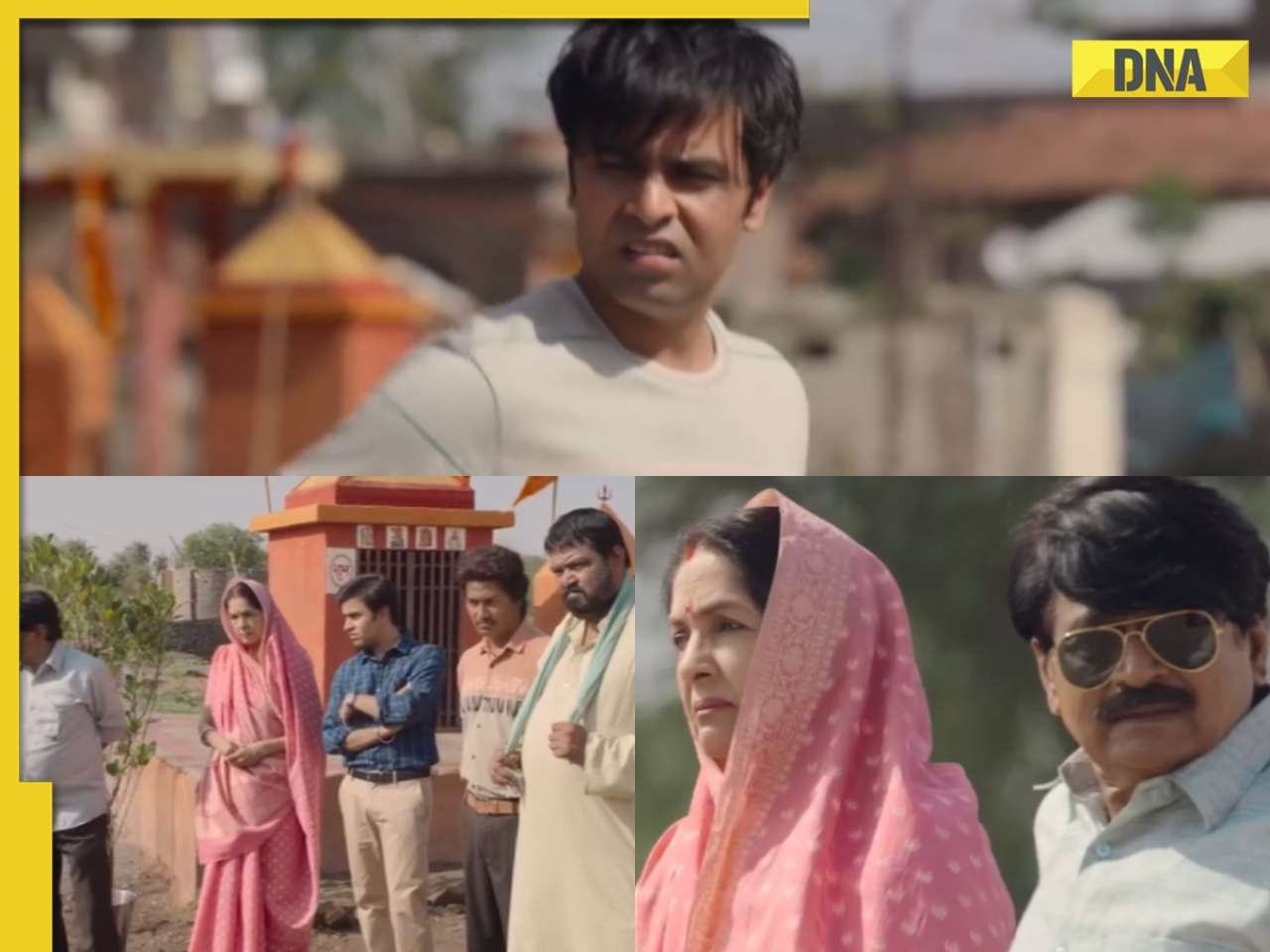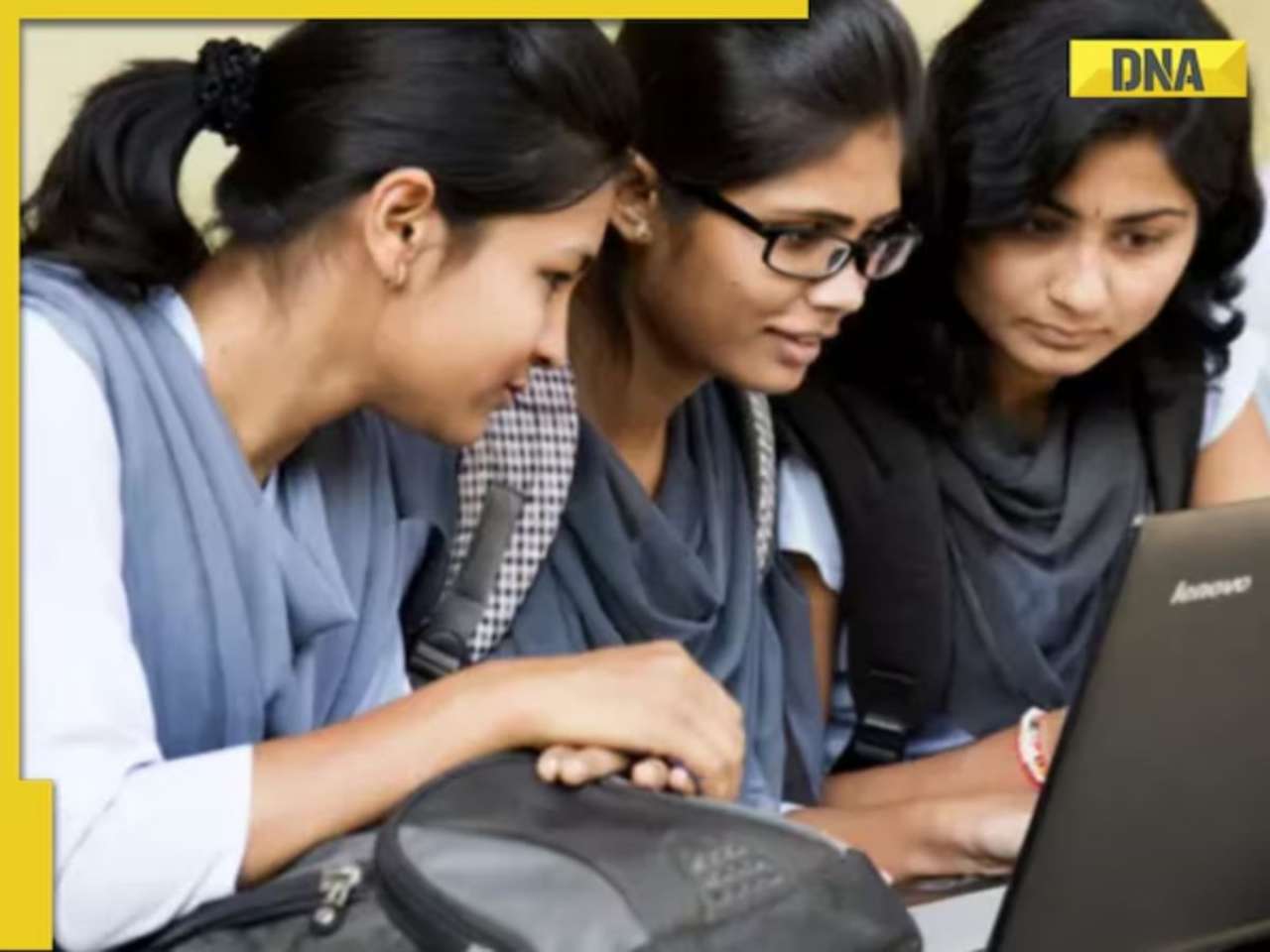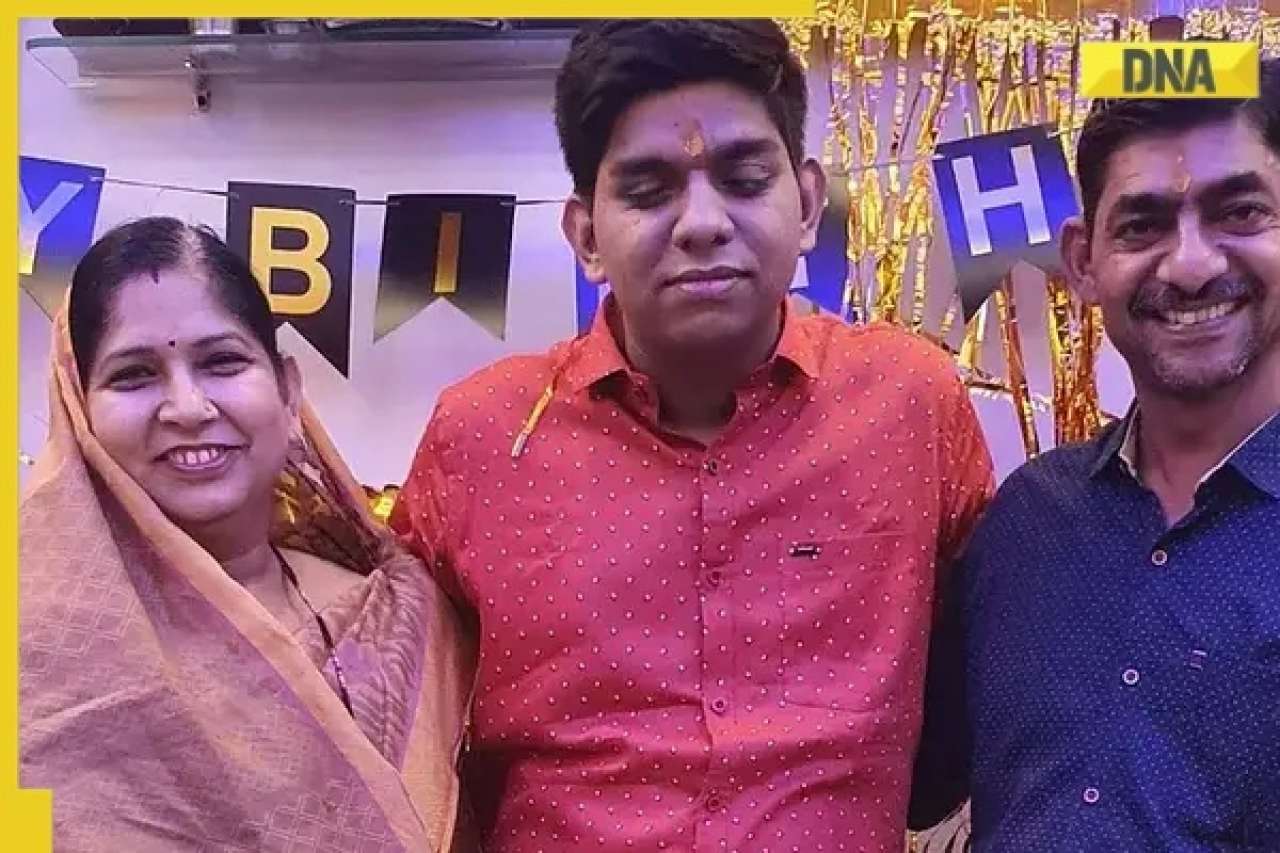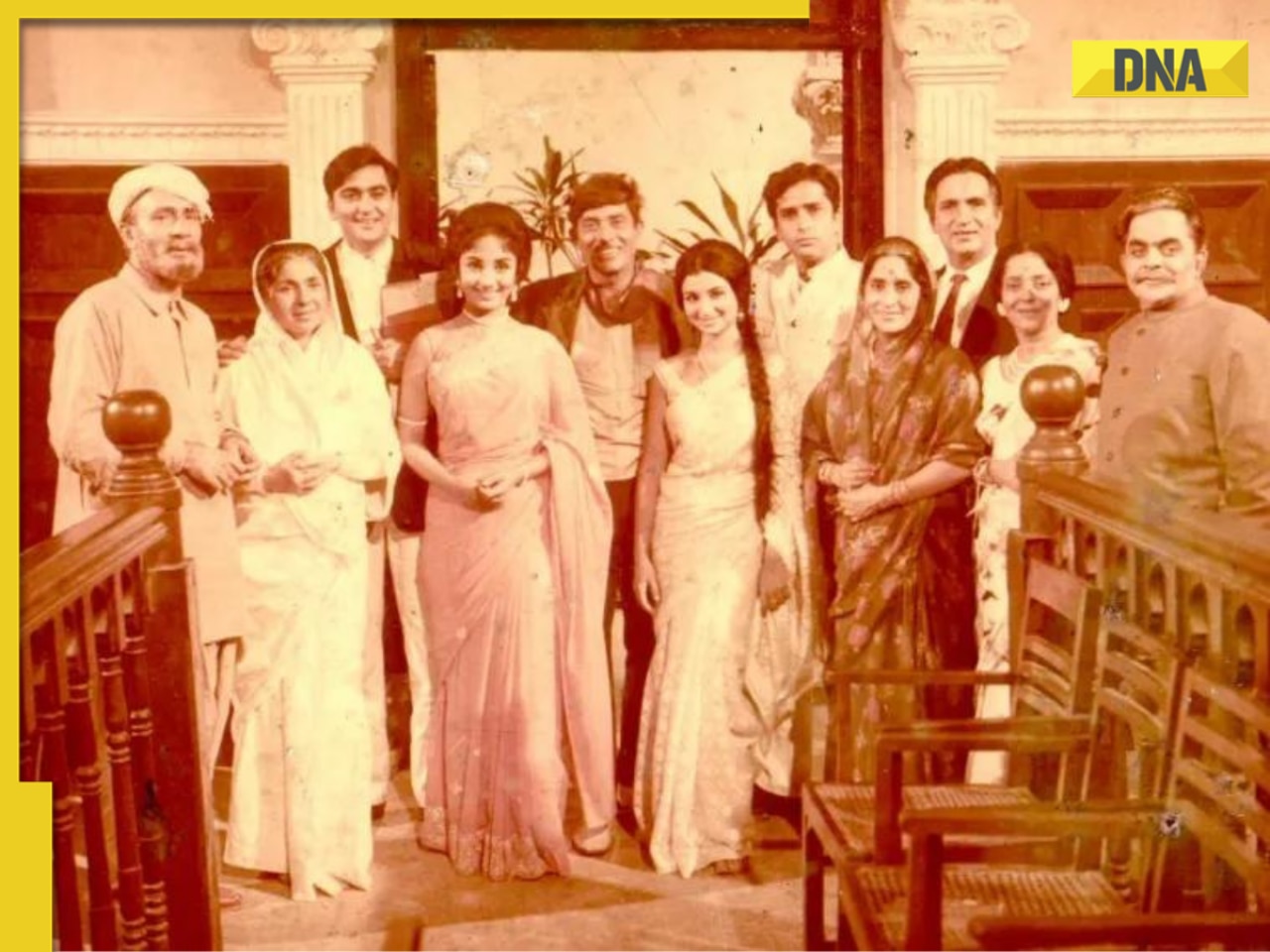There are so many more sources of information, more girls have access to education but not much has changed. A lot of myths are still doing rounds
A taboo subject for most Indians but Aditi Gupta, a social entrepreneur and graduate from the National Institute of Design (NID) in Ahmedabad saw the lack of information about menstruation as a communication design problem. Her solution to it was the online database Menstrupedia and a series of comic books that seek to explain to young girls what menstruation is. The challenge, she says, is to ensure that the information provided is complete and yet not too graphic to offend the sensibilities of teachers and parents who would be the ones providing young girls access to these books.
In a conversation with iamin ahead of the TEDxGatewayWomen 2015 where she was a speaker, she spoke about breaking taboos and how the school curriculum is falling short of proving young girls the basic information they need about their own bodies.
How did menstrupedia come about?
The idea actually came to us when I and Tuhin – my husband who was then a classmate – were studying at NID. I could discuss periods comfortably with him. In order to help me with my menstrual cramps, he started reading up online. I was shocked to know that a lot of the information that he came across was not even known to me. Growing up, I was conditioned to not talk about menstruation. We saw it more as a communication design problem. The topic is seen as a taboo and the information that needs to be given to the girl is not given to her. Menstrupedia started as our design project at NID in 2009. After passing out, we both worked in Mumbai in the e-learning industry for two years. We then got married, quit our jobs and started Menstrupedia in 2012.
How do you explain the concept of menstruation to young girls?
At Menstrupedia we make comic books about menstruation which we sell to schools, individuals and NGOs. The prototype of the comic book was built when we were in college itself.
I had personally conducted the research and spoken to parents and teachers before we finalised the content. Girls start getting their periods in class five and by class seven all the girls in a class get their periods. In school, the chapter that talks about menstruation comes only in class eight or nine. Tuhin was mainly responsible for designing the comic. We had to be careful as we could not graphically show a lot of body parts. It had to be done in a subtle way.
What did you learn during your research?
I learnt that things are exactly the same, the way it was when I was a child. There are so many more sources of information, more girls have access to education, people own iPhones but not much has changed. A lot of myths are still doing the rounds. At one of the international schools I visited, a girl thought that she could get pregnant by swimming during her periods. Weird myths surface just because the topic is still not openly discussed. Who suffers? The young girls.
I also realised that the age of menarche – the age when the girls get their first periods, has reduced. What I did find was that parents and teachers were willing to talk about the subject but were too embarrassed to broach it.
Was it difficult to take your comic book to the students?
Our main goal was to depict the subject of menstruation in a positive light. On our website we use beautiful illustrations. We take care that nothing is shown in a negative light. We got an overwhelming response and found that a lot of people were sharing our content. We wanted to end the shame associated with the subject. When we started our website in 2012, we got only 900 visitors a month but now we get around 2 lakh visitors from across the world. People are engaging with the content. We have a blog where we ask the readers to share their experiences. Some of our readers have even written poems about menstruation and all this happened very organically.
On our blog there was an article written by a man who asked women to not be ashamed about their periods. It went viral on social media sites and was shared around 30,000 times. People have made it like their own movement. They came up with strategies we couldn’t have thought of.
Which places has Menstrupedia been able to reach so far?
Our comic books, which we started printing in 2014 September, have gone to 10 different areas across India. We have also got orders from Sweden, U.S, UK, Philippines as well as Uruguay in South America. We are in the process of translating the book into Nepali which would be ready in another two months. It is also being translated into Spanish and Gujarati. 15 schools in India have included the book in their curriculum.
We have now reduced the cost of the books as we are getting orders in bulk. If someone has ordered 500 books then each book would cost them Rs 100. We are also working on the audio-visual version of the book. Shipping costs a lot, so if we digitize our product then reaching a wider audience would be easier.
What kind of content do you have in the comic books?
Our content has been refined over a period of time. In our prototype we dealt with puberty, growing up, how kids are born, the science behind periods and the myth busting part as it is not dealt with in the text books. On our website too we have four sections. Puberty and growing up, what happens in a girl’s body, boy’s boy and we also talk about menstrual hygiene.
How has the reaction been to Menstrupedia?
Most of the women ask us, ‘Where was this book when I was growing up?’ They have their own questions. Parents love the book. When you are dealing with taboo subjects, it is always easier to bring about change in others but not within your own family. Change in attitudes will come, but it will take a few decades. At least we are breaking the silence around menstruation.
What would you say to other aspiring social entrepreneurs?
I think this is a very exciting time to be a social entrepreneur. Find a local solution to a local problem and charge a small amount for it. There are so many users, that even if everyone pays you a small amount, your company will function well. It definitely needs to be sustainable. I would always encourage entrepreneurs to make products for the users and not be dependent on external funding.
For the longer version of the report, click here
![submenu-img]() House of the Dragon season 2 trailer: Rhaenyra wages an unwinnable war against Aegon, Dance of the Dragons begins
House of the Dragon season 2 trailer: Rhaenyra wages an unwinnable war against Aegon, Dance of the Dragons begins![submenu-img]() Panchayat season 3 trailer: Jitendra Kumar returns as sachiv, Neena, Raghubir get embroiled in new political tussle
Panchayat season 3 trailer: Jitendra Kumar returns as sachiv, Neena, Raghubir get embroiled in new political tussle![submenu-img]() Apple partners up with Google against unwanted tracker, users will be alerted if…
Apple partners up with Google against unwanted tracker, users will be alerted if…![submenu-img]() Meet actress whose debut film was superhit, got married at peak of career, was left heartbroken, quit acting due to..
Meet actress whose debut film was superhit, got married at peak of career, was left heartbroken, quit acting due to..![submenu-img]() Who is the real owner of Delhi's Connaught Place and who collects rent from here?
Who is the real owner of Delhi's Connaught Place and who collects rent from here?![submenu-img]() Meet man who is 47, aspires to crack UPSC, has taken 73 Prelims, 43 Mains, Vikas Divyakirti is his...
Meet man who is 47, aspires to crack UPSC, has taken 73 Prelims, 43 Mains, Vikas Divyakirti is his...![submenu-img]() IIT graduate gets job with Rs 100 crore salary package, fired within a year, he is now working as…
IIT graduate gets job with Rs 100 crore salary package, fired within a year, he is now working as…![submenu-img]() Goa Board SSC Result 2024: GBSHSE Class 10 results to be out today; check time, direct link here
Goa Board SSC Result 2024: GBSHSE Class 10 results to be out today; check time, direct link here![submenu-img]() CUET-UG 2024 scheduled for tomorrow postponed for Delhi centres; check new exam date here
CUET-UG 2024 scheduled for tomorrow postponed for Delhi centres; check new exam date here![submenu-img]() Meet man who lost eyesight at 8, bagged record-breaking job package at Microsoft, not from IIT, NIT, VIT, his salary is…
Meet man who lost eyesight at 8, bagged record-breaking job package at Microsoft, not from IIT, NIT, VIT, his salary is…![submenu-img]() DNA Verified: Is CAA an anti-Muslim law? Centre terms news report as 'misleading'
DNA Verified: Is CAA an anti-Muslim law? Centre terms news report as 'misleading'![submenu-img]() DNA Verified: Lok Sabha Elections 2024 to be held on April 19? Know truth behind viral message
DNA Verified: Lok Sabha Elections 2024 to be held on April 19? Know truth behind viral message![submenu-img]() DNA Verified: Modi govt giving students free laptops under 'One Student One Laptop' scheme? Know truth here
DNA Verified: Modi govt giving students free laptops under 'One Student One Laptop' scheme? Know truth here![submenu-img]() DNA Verified: Shah Rukh Khan denies reports of his role in release of India's naval officers from Qatar
DNA Verified: Shah Rukh Khan denies reports of his role in release of India's naval officers from Qatar![submenu-img]() DNA Verified: Is govt providing Rs 1.6 lakh benefit to girls under PM Ladli Laxmi Yojana? Know truth
DNA Verified: Is govt providing Rs 1.6 lakh benefit to girls under PM Ladli Laxmi Yojana? Know truth![submenu-img]() Ananya Panday stuns in unseen bikini pictures in first post amid breakup reports, fans call it 'Aditya Roy Kapur's loss'
Ananya Panday stuns in unseen bikini pictures in first post amid breakup reports, fans call it 'Aditya Roy Kapur's loss'![submenu-img]() Remember Harsh Lunia? Just Mohabbat child star, here's how former actor looks now, his wife is Bollywood's popular...
Remember Harsh Lunia? Just Mohabbat child star, here's how former actor looks now, his wife is Bollywood's popular...![submenu-img]() Mother's Day 2024: Bollywood supermoms who balance motherhood, acting, and run multi-crore businesses
Mother's Day 2024: Bollywood supermoms who balance motherhood, acting, and run multi-crore businesses![submenu-img]() Rocky Aur Rani's Golu aka Anjali Anand shocks fans with drastic weight loss without gym, says fitness secret is...
Rocky Aur Rani's Golu aka Anjali Anand shocks fans with drastic weight loss without gym, says fitness secret is...![submenu-img]() In pics: Ram Charan gets mobbed by fans during his visit to Pithapuram for ‘indirect campaign’ for uncle Pawan Kalyan
In pics: Ram Charan gets mobbed by fans during his visit to Pithapuram for ‘indirect campaign’ for uncle Pawan Kalyan![submenu-img]() Haryana Political Crisis: Will 3 independent MLAs support withdrawal impact the present Nayab Saini led-BJP government?
Haryana Political Crisis: Will 3 independent MLAs support withdrawal impact the present Nayab Saini led-BJP government?![submenu-img]() DNA Explainer: Why Harvey Weinstein's rape conviction was overturned, will beleaguered Hollywood mogul get out of jail?
DNA Explainer: Why Harvey Weinstein's rape conviction was overturned, will beleaguered Hollywood mogul get out of jail?![submenu-img]() What is inheritance tax?
What is inheritance tax?![submenu-img]() DNA Explainer: What is cloud seeding which is blamed for wreaking havoc in Dubai?
DNA Explainer: What is cloud seeding which is blamed for wreaking havoc in Dubai?![submenu-img]() DNA Explainer: What is Israel's Arrow-3 defence system used to intercept Iran's missile attack?
DNA Explainer: What is Israel's Arrow-3 defence system used to intercept Iran's missile attack?![submenu-img]() House of the Dragon season 2 trailer: Rhaenyra wages an unwinnable war against Aegon, Dance of the Dragons begins
House of the Dragon season 2 trailer: Rhaenyra wages an unwinnable war against Aegon, Dance of the Dragons begins![submenu-img]() Panchayat season 3 trailer: Jitendra Kumar returns as sachiv, Neena, Raghubir get embroiled in new political tussle
Panchayat season 3 trailer: Jitendra Kumar returns as sachiv, Neena, Raghubir get embroiled in new political tussle![submenu-img]() Meet actress whose debut film was superhit, got married at peak of career, was left heartbroken, quit acting due to..
Meet actress whose debut film was superhit, got married at peak of career, was left heartbroken, quit acting due to..![submenu-img]() 'Ek actress 9 log saath leke...': Farah Khan criticises entourage culture in Bollywood
'Ek actress 9 log saath leke...': Farah Khan criticises entourage culture in Bollywood![submenu-img]() Bollywood’s 1st multi-starrer had 8 stars, makers were told not to cast Kapoors; not Sholay, Nagin, Shaan, Jaani Dushman
Bollywood’s 1st multi-starrer had 8 stars, makers were told not to cast Kapoors; not Sholay, Nagin, Shaan, Jaani Dushman![submenu-img]() Who is the real owner of Delhi's Connaught Place and who collects rent from here?
Who is the real owner of Delhi's Connaught Place and who collects rent from here?![submenu-img]() Viral video: Chinese artist's flaming 'stairway to heaven' stuns internet, watch
Viral video: Chinese artist's flaming 'stairway to heaven' stuns internet, watch![submenu-img]() Video: White House plays 'Sare Jahan Se Achha Hindustan Hamara" at AANHPI heritage month celebration
Video: White House plays 'Sare Jahan Se Achha Hindustan Hamara" at AANHPI heritage month celebration![submenu-img]() Viral video: Bear rides motorcycle sidecar in Russia, internet is stunned
Viral video: Bear rides motorcycle sidecar in Russia, internet is stunned![submenu-img]() Driver caught on camera running over female toll plaza staff on Delhi-Meerut expressway, watch video
Driver caught on camera running over female toll plaza staff on Delhi-Meerut expressway, watch video




































)

















)
)
)
)
)
)